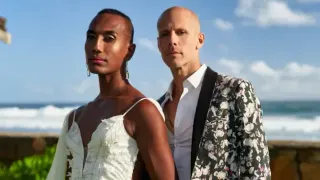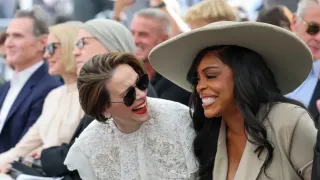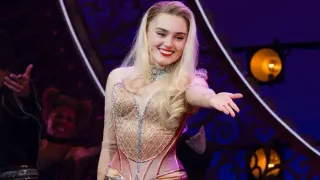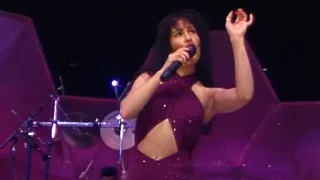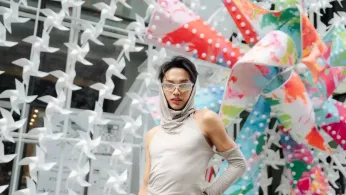
Sep 5
Beyond the Rainbow: How Queer Fashion in 2025 Became a Canvas for Identity and Protest
READ TIME: 3 MIN.
The streets, runways, and social feeds of 2025 are alive with a new vision of queer fashion—one that moves past the familiar sequins and rainbow motifs to embrace deeper forms of self-expression, activism, and community storytelling. What was once dominated by mass-produced “Pride merch” has transformed into a landscape where personal narratives and collective histories are stitched, dyed, and layered into each garment. This shift is not just aesthetic; it’s political and deeply rooted in the lived experiences of LGBTQ+ people globally .
A defining feature of the current queer fashion movement is the reclamation and transformation of clothing. Designers such as MI Leggett of Official Rebrand have pioneered the use of reclaimed fabrics to create expressive, gender-neutral garments, foregrounding sustainability and the rejection of binary norms. Their work has inspired a new wave of indie brands—like Berriez and Phlemuns—that remix nostalgia, streetwear, and body inclusivity, resulting in collections that blur the lines between high fashion and everyday wear .
This ethos extends to larger brands as well. Tanner Fletcher, for instance, has garnered attention for their bespoke suits and gowns that cater specifically to queer couples, challenging traditional expectations of wedding attire and placing gender fluidity at the forefront of bridal fashion .
The resurgence of chunky, comfortable footwear—such as Doc Martens, Birkenstocks, and Timberland sandals—can be traced to lesbian and queer women’s subcultures of the 1970s and 1980s. These shoes were practical for protest marches and signified a rejection of hyper-feminized norms. In 2025, chunky shoes are a coded signal of queer identity, with brands like Sezane and Miista offering elegant, walkable options that prioritize comfort without sacrificing style .
Beyond shoes, “dressing for the female gaze” has become central to queer women’s fashion. Rather than conforming to the male gaze, queer women and nonbinary people are reclaiming traditionally “girly” elements—corsets, mini skirts, silk, lace, and pink hair—while mixing in masculine silhouettes. The result is a spectrum of creative expression that affirms authenticity and challenges conventional standards of beauty .
A notable trend in 2025 is the rise of techno-fashion, where garments incorporate wearable technology—think jackets embedded with smart screens, color-changing fabrics, and shoes that record every step. These innovations are more than mere novelties; for queer communities, they are tools for visibility and self-expression. Slogan shirts, a nod to past eras of protest fashion, have returned as wearable statements, reinforcing the idea that clothing can spark dialogue and challenge societal norms .
Luca Magliano’s recent collection in Milan exemplifies this blend of boldness and intimacy, drawing inspiration from cruising culture and queer spaces. Magliano explicitly frames his work as a celebration of queer sensuality, stating, “They have to be addressed with no shame or judgement, because it’s who we are” .
Major fashion weeks in New York, Paris, and Milan have showcased queer designers and aesthetics at the forefront of global trends. Gay men’s fashion, for example, has seen the Commodore-inspired “mop dog” trend, with exaggerated coats and fringe patterns blending goth romanticism and winter practicality. Chocolate tones—unexpectedly—dominated this year’s color palette, with brands like BGA Vetta, Louis Vuitton, and Zegna offering luxurious interpretations that move beyond the rainbow .
Palomo Spain’s Spring/Summer 2025 collection, staged in a cathedral, directly interrogated the intersections between queer desire and religious iconography, asking audiences to imagine “divine paradise” through a queer lens .
Digital platforms—especially TikTok and Instagram—have become incubators for new queer fashion trends. Viral challenges, hashtag campaigns, and influencer collaborations accelerate the pace at which styles are adopted and remixed. For instance, Telfar’s “Bushwick Birkin” bag became a global phenomenon largely due to social media hype and community-driven drop notifications, cementing its place as a queer fashion staple .
On TikTok, creators regularly share “Get Ready With Me” videos that showcase personal interpretations of queer fashion, blending influences from drag, ballroom, and streetwear. These digital spaces foster dialogue around identity, representation, and the politics of visibility.
Queer fashion in 2025 is inseparable from the rituals of Pride and protest. At events like NYC Pride, attendees use fashion to communicate identity, solidarity, and resistance. Mesh tops layered over harnesses, pastel buzzcuts beneath bucket hats, and glitter beards reinvent classic looks for a generation intent on challenging the status quo .
Feather boas, body chains, and slogan shirts have reemerged—not as empty symbols, but as conscious choices that signal community membership and political intent. The act of dressing up for Pride is, itself, a ritual of affirmation and protest, resisting heteronormativity and celebrating the multiplicity of queer identities.
What sets 2025 apart is the explicit embrace of intersectionality in queer fashion. Designers and consumers alike are prioritizing size inclusivity, accessibility, and the representation of diverse identities across race, gender, and ability. Indie brands such as Berriez are known for sizing that goes beyond industry standards, challenging both fashion and societal norms .

